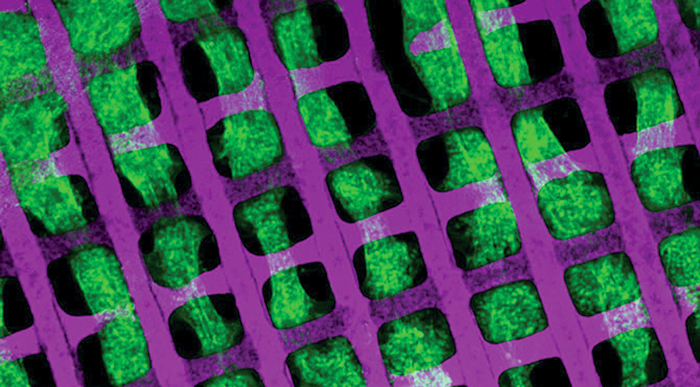Breakthroughs and trends in the world of technology
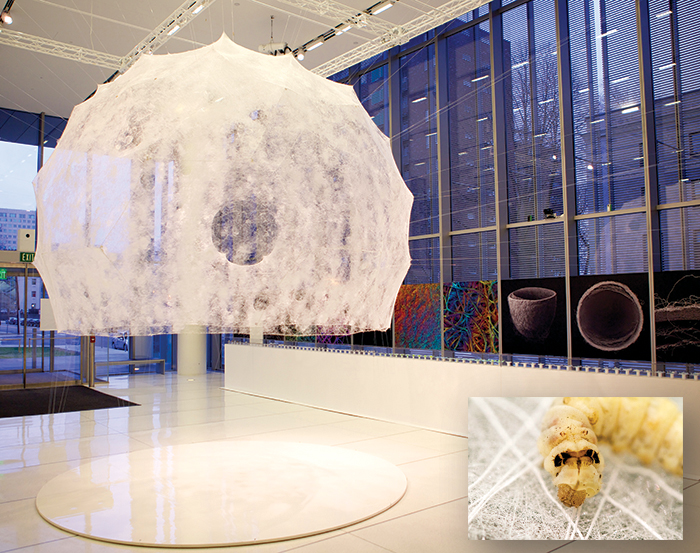
Digital Design
Silk Code
The ethereal dome with craterlike holes looks like some frosty planet. But the Silk Pavilion hanging in the lobby of MIT’s Media Lab has a decidedly down-to-earth purpose: Woven almost entirely by silkworms, it shows how nature’s own structural engineering processes can be applied to digital design and fabrication technologies. Humans have been putting silkworms to practical use for more than 5,000 years. MIT Assistant Professor of Media Arts and Sciences Neri Oxman and her team coupled a computer’s efficiency with the caterpillar’s internal programming for weaving silk into elaborate structures. First, they created a computer-designed scaffold made of steel hexagons and a half-mile-long silk starter thread laid down using an algorithm that mimics the way a silkworm deposits strands for its cocoon. They then released 6,500 silkworms on the frame. Differences in density across the dome reveal a lot about the insects’ spinning patterns, especially their aversion to sunlit areas. They also show that computer-generated models could be used to employ silkworms as “biological 3-D printers,” according to Oxman, who believes the technique could help create environmentally friendly architecture or fashion. – Sarah Khan
Image Courtesy of MIT

Avionics
Fearless Fliers
In November 2002, two heat-seeking missiles narrowly missed a Boeing 757-300 carrying hundreds of Israeli passengers as it climbed out of Mombasa, Kenya, highlighting the need for new protective measures. Israeli defense contractor Elbit Systems has developed just such an antimissile system, and it is slated for commercial use in a few months. C-MUSIC, or Commercial Multi-Spectral Infrared Countermeasure, comes in a bathtub-shaped, 8.8-foot-long pod attached to the fuselage behind the wings. Inside is an electronic device that scans the skies for missiles and instantly relays data to a thermal camera that tracks then blinds the homing device with an extremely accurate and powerful laser beam. All this happens within “a second and something,” said Ronen Cohen, a vice president at El-Op, the electro-optics subsidiary that produced C-MUSIC. Shoulder-launched missiles have short ranges, endangering civilian aircraft during takeoff and landing. An attack lasts six to eight seconds, hardly any time for pilot intervention, so the system reacts automatically. Aircraft performance is not affected. C-MUSIC was recently tested on an El Al Boeing 737 passenger jet. All Israeli airlines’ planes will be refitted so the pods can be attached, but to save weight, the 353-pound kits will be installed only on flights to dangerous airports. – Joshua Brilliant
Image: Thinkstock

Materials
Latin Lessons
Much of the concrete used for construction in the 1900s had an expected life-span of about 50 years, while newer versions should last for 100. That’s nothing compared with ancient Roman concrete, which has survived more than two millennia even in harsh ocean environments. Now a team at Lawrence Berkeley National Lab has discovered the secret sauce behind that highly durable concrete: volcanic ash and seawater. Using the lab’s Advanced Light Source, a synchrotron that’s essentially a powerful X-ray machine, researchers studied the fine-scale structure of Roman concrete from a 2,000-year-old breakwater near Naples, Italy. They found the concrete’s main ingredient was a mortar formed from ash and lime, but the Romans added seawater to strengthen submerged areas. The saline water caused a hot chemical reaction, hydrating the lime and adding water molecules to the mixture. Like modern concrete, which uses portland cement as its glue, the Roman version forms a compound of calcium and silicate hydrate. But it also included aluminum as well as a rare hydrothermal mineral called aluminum tobermorite. Those ingredients resulted in a much sturdier material. It also was environmentally cleaner to make. Some 7 percent of industrial carbon dioxide emissions worldwide come from portland cement production, which requires heating limestone and clay – usually by burning fossil fuels at 2,642 degrees Fahrenheit. Roman cement can be made in less time at temperatures of only 1,652°F, producing fewer emissions. The researchers say that by using a commonly found volcanic ash called pozzolana, the construction industry could cut demand for portland cement by 40 percent. That’s what’s called concrete advice. – Thomas K. Grose
Image: Thinkstock
3-D Printing
Feel the Beat
Using polymer scaffolds seeded with cells to grow tissue is not new, but replicating complex organs like hearts has proved elusive. That’s because it’s hard to align the 3-D pore structure of the scaffolds that support the growth of complex tissues, which initially form multicellular fibers from the cells, from which they then form sheets of tissue. But a team led by Lisa Freed at MIT’s Draper Laboratory has used 3-D printing technology borrowed from the microelectronics industry – basically, the machines used to fabricate circuit boards – to print thin layers of biorubber, a polymer that can be stacked into layers to build the scaffold. A computer program precisely aligns their pore network. Freed’s team showed it could create tissue from neonatal rat cells that beat when electrically stimulated. The goal would be flexible scaffolds that could be placed on injured organs to grow replacement tissue and then harmlessly dissolve. Bioengineers must still figure out how to weave in a vascular network to keep the new cardiac tissue healthy and ensure that it can work as flawlessly as a real heart. Nevertheless, Freed told Technology Review, the chip fabrication method of building tissue scaffolds has opened “a whole new design space.” – TG
Image Courtesy of MIT

Software Engineering
Site-seer’s App
American engineering educators know that a big hurdle in getting kids interested in the profession is that most don’t understand what engineers do. That’s true in Britain, too. “The term ‘engineer’ doesn’t have any status,” says Gavin Pearson, spokesman for the Association for Consultancy and Engineering (ACE), a trade group. But now there’s an app for that. ACE has created a free smartphone app geared to students that showcases 14 “world-class construction projects” around London’s King’s Cross neighborhood, home to the huge, eponymous train station and a host of other designed delights, including the Eurostar terminal and Regent’s Canal. Walking past one of the sites triggers an alert; click on the app and up flash a few paragraphs of background information, followed by a five-minute video featuring an engineer explaining the project’s historic significance along with current work to build a high-speed railway through the area. A “learn more” link leads to information about engineering careers and university courses. ACE is working closely with schools to ensure teachers know about the app, which will be launched in September with a week of app-oriented walking tours. If the app, which cost around $121,000 to produce, proves successful, ACE hopes to develop others that highlight other engineering monuments in London and in cities around Britain. – TG
Image: Thinkstock
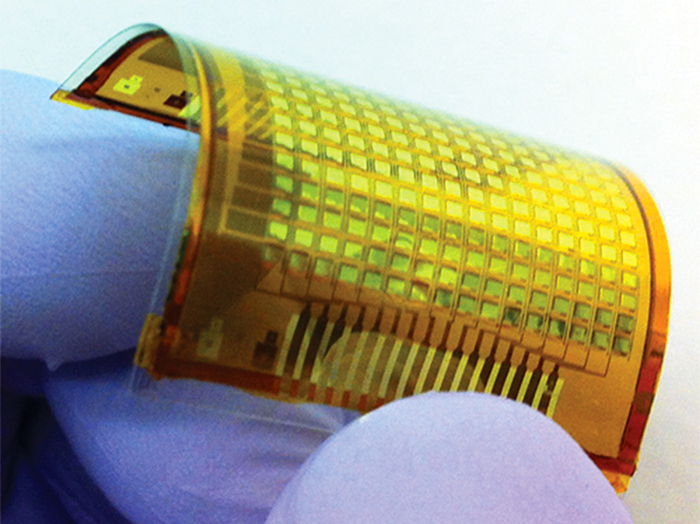
Electrical Engineering
Thin-Skinned
Imagine a thin sheet of wallpaper that also works as a touchscreen display. That’s just one of the possible uses for a new, flexible electronic skin developed by electrical engineers at the University of California, Berkeley. In a recent demonstration of the e-skin, lead investigator Ali Javey, an associate professor of electrical engineering and computer science, showed how the 16-by-16-pixel, paper-thin sheet – about the size of a postage stamp – would light up when it was touched. The more pressure was applied, the brighter it glowed. Inside each pixel is a transistor, an organic LED (OLED), and a pressure sensor. Javey and his postdoc, Chuan Wang, laid a thin sheet of polymer atop a silicon wafer. Once it hardened, they used standard microelectronics fabrication tools to etch in the layers of electrical components. They then peeled off the plastic – now embedded with a sensor network . Wang, currently an assistant professor of electrical and computer engineering at Michigan State University, says integrating sensors into a network is old hat, “but converting the data obtained into something interactive is the breakthrough.” Other possible uses include giving robots a keen sense of touch, or an e-skin bandage that monitors blood pressure and pulse rates. Meanwhile, Javey wants to create e-skins that respond to light and heat as well as touch. Future robots may need to keep sunscreen handy. – TG
Image Courtesy of Ali Javey and Chuan Wang
Factoid
$1 BILLION
Amount spent by the German airline Lufthansa on research, design, manufacturing, and installation of a new business class seat.
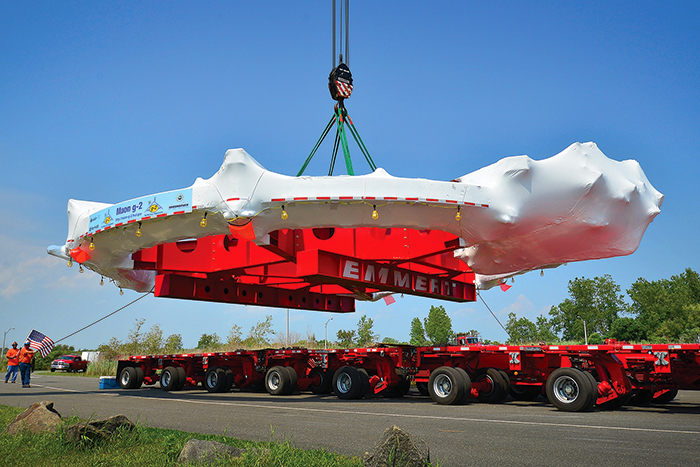
Particle Physics
Smooth Move
How do you transport a 17-ton, 50-foot, highly fragile, $25 million piece of lab equipment 3,200 miles? Very carefully and very slowly, as Chicago’s Fermilab proceeded to do with a giant electromagnet that had sat unused for a dozen years at Brookhaven National Laboratory in New York. When the steel-and-aluminum behemoth last cranked up, physicists shot beams of muons – subatomic particles that exist for just 2.2 millionths of a second – through its empty chamber. How the muons reacted when they hit clouds of virtual particles that instantly pop in and out of existence seemed to contradict the Standard Model, the main theory of physics. But those results couldn’t be confirmed because Brookhaven’s equipment wasn’t powerful enough to ramp up the muon beams. Fermilab, in suburban Chicago, has a particle accelerator that can increase the muon beam by 20-fold and allow for more precise experiments, but it lacked the $30 million to build a new electromagnet. A $3 million move seemed a bargain. But the Brookhaven magnet was deemed too fragile to take apart and rebuild. Indeed, it’s so delicate that if it twisted or sagged a mere third of an inch, its internal wiring would be irreparably damaged. To protect the electromagnet on its journey, it was wrapped in a special casing, then gently placed on a specially made barge and hauled down the Atlantic, into the Gulf of Mexico, and finally up the Mississippi River. It was then slowly trucked – top speed: 10 mph – to Fermilab, a road trip that lasted three long nights. The electromagnet arrived in the wee hours of July 26, apparently intact, about a month after leaving New York. Even in the hyperfast world of particle physics, sometimes it pays to slow things down to a crawl. – TG
Image Courtesy of Brookhaven National Laboratory
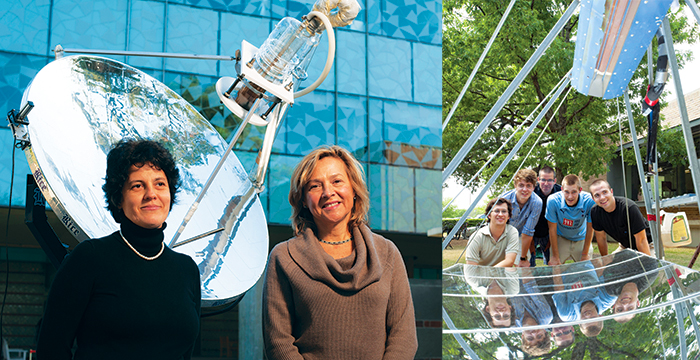
Nanotechnology
Clean and Green
Billions of people lack adequate sanitation and electricity. But a solar-powered autoclave invented by nanotechnology researchers at Rice University may soon help them sanitize human waste or sterilize medical instruments. The device uses nanoshells that convert a broad spectrum of both visible and invisible bandwidths of sunlight into heat. When the particles are put in water and exposed to the sun, they instantly vaporize the water before it can boil, creating an ultrahot steam that can zap not only heat-resistant microbes but also spores and viruses – all without electricity. “Sanitation technology isn’t glamorous, but it’s a matter of life and death for 2.5 billion people,” says Naomi Halas, director of Rice’s Laboratory for Nanophotonics. The solar sterilizer, she says, also benefits from being quick, small, and easy to operate, and it contains no dangerous components. “And it’s the only technology we’ve seen that can completely sterilize waste,” says Halas, whose team expects to field-test the autoclave in Kenya. – TG
Image Courtesy of Jeff Fitlow/ Rice University

Computer Security
Biometric Measures
Passwords often are a vexing way to keep personal data safe. Pick a term that’s easy to remember, and it’s probably easy to foil. Good luck trying to recall one that’s tough to crack. So why haven’t biometric security systems, which identify users based on unique physical or behavioral characteristics, caught on? A new University of Washington study found that while most folks don’t trust passwords and PINs and think a biometric system – such as an eye-tracker – would be more secure, their faith in biometrics is quickly shaken if the authentication fails. There would be greater public acceptance if the biometric systems were speedy, accurate, and able to provide error messages with helpful feedback. Meanwhile, DARPA is funding research to develop a biometric authentication system that would recognize each person’s unique “cognitive fingerprint” – based on the way individuals interact with technology. In other words, it could detect with 99 percent accuracy who we are by how we type on a keyboard or wield a mouse, because no two people do those things in the same way. Type in your user name at a website, and the system would instantly know if it’s you. It also would know if someone else took command of the keyboard after you logged on. Sweden’s BehavioSec has been working with DARPA on developing the technology – which monitors how quickly and with how much pressure someone keys in a PIN – and it already is being used by some banks. Can you log in “Bye-bye, passwords”? – TG
Image: Thinkstock
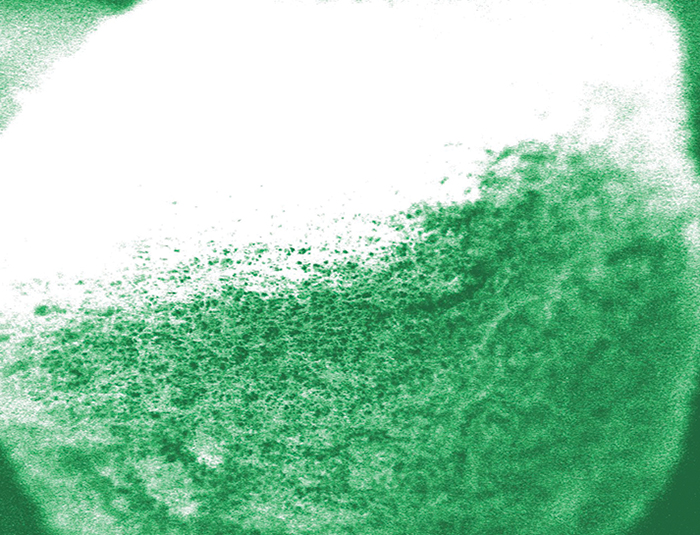
Bioengineering
Biometric Measures
Patients with type 1 or advanced type 2 diabetes require regular injections of insulin to keep their blood-sugar levels in check. But researchers at a joint engineering program at North Carolina State University and the University of North Carolina, Chapel Hill, have developed a spongelike matrix that, once injected into the bloodstream, would automatically release insulin as needed. The material is made from chitosan, which is found in shrimp and crab shells, and it’s filled with nanocapsules of porous polymers containing glucose oxidase or catalase enzymes. This is then packed around a core of insulin. If blood sugar starts to rise to dangerous levels, the glucose triggers the enzymes to release hydrogen ions, giving the sponge a positive electric charge that causes the strands of chitosan to pull away from each other, thus opening pores that release the insulin. The positive charge abates as blood-sugar levels subside and the sponge shrinks back to its original size, re-trapping the insulin. Bioengineer Zhen Gu, lead author of a paper describing the work, says the material could also be used without an enzyme to target cancer cells – which typically are awash in hydrogen ions – with anticancer drugs. The lowly sponge inspired another medical delivery technology. Late last year, bioengineers at Harvard reported they had invented a gel-based sponge that can be molded into any shape and compressed to a fraction of its initial size. Once injected into the body, it puffs back to its original shape. Before it harmlessly dissolves, it could be used to transplant stem cells or for controlled drug delivery. – TG
Image Courtesy of Zhen Gu

Aeronautical Engineering
Wind Surfers
When ducks fly in formation, the lead bird does the heavy work while the others coast on its tailwinds, or vortices. It’s called vortex surfing, and bike and auto racers do it too. Now the Air Force wants to let some jets make use of vortex surfing to help cut its astronomical fuel bill, which totaled more than $9 billion last year. In July, two C-17 cargo jets flew from California to Hawaii and back to test the technique. En route, the second jet cut its fuel use by 6 percent, and by 10 percent on the return trip. Ultimately, the Air Force estimates that vortex surfing could cut fuel use of some flights by as much as 20 percent. DARPA, Boeing, and NASA were among the researchers. The technique mainly required recoding the trailing plane’s autopilot so that it maintained a safe distance from the lead jet – between 3,000 and 6,000 feet –and ensured it was riding the vortex’s updraft, not downdraft. The planes proved that they could rejoin their formation, descend, cruise, and fly at night, as well as at sunrise and sunset, according to Foreign Policy magazine. If the Air Force green-lights the concept, it will most likely take around three years to fully implement. Don’t expect to spot a flock of cargo planes flying in formation, however. Vortex surfing is too difficult to manage with more than one chase plane. – TG
Image Courtesy of Tech. Sgt. Russell E. Cooley IV
